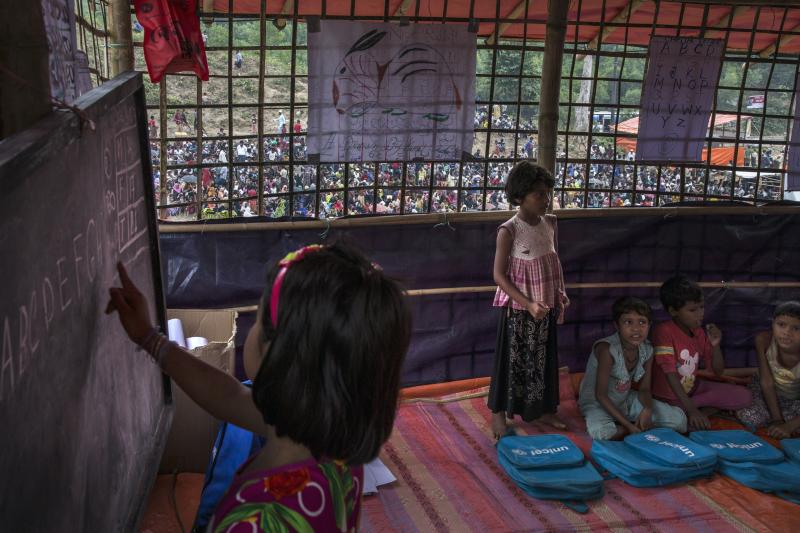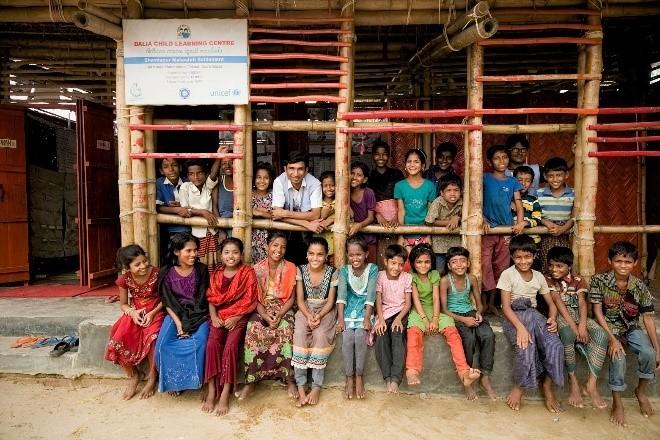5. Assistance to Needy Muslim Communities in Asia
The project is targeted towards combating poverty and improving the livelihood of Muslim communities in Asia who are living in substandard conditions, such as the Rohingya minority in Myanmar and Bangladesh.
Objectives
Urgent Relief: provide urgent relief to affected communities through several direct interventions.
Quality Education: ensure universal access to education for the Rohingya children and other underprivileged communities
Youth Empowerment: improve livelihood prospects of adolescents in communities through vocational training
Health and Well-being:
- Provide primary and direct health support to the most vulnerable and needy sector of society.
- Strengthen the health resilience of displaced and host communities.
- Improve access to maternal and child healthcare services.
Reduce inequality: support peaceful coexistence and more harmonious inter-communal relationships.
Beneficiaries
The number of project beneficiaries in Myanmar was approximately 20,000; in addition to over 400,000 Rohingya refugees inside the camps in Cox’s Bazar in Bangladesh. The impact of KAAP interventions was observed during several field visits, even though many of the projects are still under implementation. The positive impact is significant due to the critical needs of the refugees and the special nature of the financed components. By the end of 2019, this project included 12 sub-projects with a total budget of US$28 million.
Expected Socioeconomic Results
The project’s aim is to fulfill the needs of the Muslim communities in the medium to long term by improving the education and health sectors as a priority, although it also covers other key development areas, namely, vocational and technical training, food security, and infrastructure. Given the initial impact of the project during implementation, it is expected to have, upon completion, an enormous impact on destitute communities, as well as on the hosting society at large, with very positive socioeconomic results. This is due to the dire and diversified needs of the targeted communities and to the direct services and broad scope covered by KAAP and its partnering NGOs. KAAP interventions help set sustainable development in motion, raise the standard of living, and improve the economy at large.
Implementation Timeline and Progress
This project is ongoing with an open end; new worthwhile interventions are being appraised and added continuously. Since the project was launched, several operations were implemented inside Myanmar comprising mainly distribution of food baskets, provision of primary healthcare, and sponsoring teaching classes for the children of the community, for a total of US$2.2 million in partnership with Transform Lives, Muslim Aid, MERCY Malaysia, and Human Appeal. However, after the 2017 violence in the Rakhine state in Myanmar, some operations were halted.
Consequently, KAAP’s assistance was moved to the Rohingya Refugee Camps in Cox’s Bazar district in Bangladesh. In 2017, KAAP approved an amount of US$7.3 million for a Primary Education and Vocational Training project in cooperation with United Nations Children’s Fund -UNICEF targeting the Rohingya Refugee Camps, thus providing a parallel line of Primary Education to the children of the Rohingya Community in addition to vocational training for their youth.
In September 2018, KAAP approved a US$1.824 million project for establishing a Field Hospital for Women and Children in Rohingya Camp-4 in Cox’s Bazar. Then, in November 2018, the Program approved an additional comprehensive health project worth US$8.5 million in collaboration with the International Federation of Red Cross/Crescent (IFRC), serving both the refugees and the host community. Most recently, in October 2019, the Program approved a grant of US$7.8 million for implementation of a multi-sector project for the Rohingya refugees in cooperation with the Human Relief Foundation (HRF) covering several sectors, e.g. rebuilding of shelters, education, vocational training, and planting of trees.
Success Stories
Every morning, thousands of children, with their backpacks will walk through the camps to reach the learning centers. Efforts were stepped up to set up temporary learning centers across the camps to enroll thousands of Rohingya children. This was made possible with generous funding from the King Abdullah Program (KAAP) supporting education interventions for displaced Rohingya children. While thousands of Rohingyas gather every day to collect humanitarian aid to survive in the harsh conditions of a heavily congested camp, many children found opportunities to learn in the learning centers, a respite from the incredibly difficult realities of the camps.
At an initial stage of the education program in Rohingya camps, emergency education kits were supplied to help children learn English and math and have some fun time with poems and songs – both in English and Burmese. Learning was a joy for these traumatized children. A welcoming and cheerful environment played a significant role in providing psychosocial support to these children to momentarily forget the hardship and violence they experienced. Hundreds of teachers were recruited from both Rohingya and Bangladeshi host communities and were given training on education in emergency. These teachers not only helped children learn, but also actively worked as kind, caring and supportive individuals, bringing some normalcy in Rohingya children’s lives. With a growing number of children arriving until mid-2018, more learning centers were established, with an aim to enroll over 200,000 children between 4 – 14 years of age.

As at 20 October 2017, well over half
KAAP and its partners also care for children with disabilities, as they are often left behind in education. Several learning centers started providing special care to these children enrolled in learning sessions. In 2020, KAAP and its education partners in Cox’s Bazar aim to step up their efforts to support many more children with disabilities to receive education. In Rohingya camps, there are 38 learning centers, supported by KAAP that provide education support for children with disabilities. In December 2018, UNICEF assessed 180,000 Rohingya children aged between 4 – 14 years of age.
The results show that over 65 % of the children are at elementary level, indicating lack of access to education while they lived in Myanmar. As there was no opportunity available for Rohingya children to follow either Burmese or Bangladeshi curriculum, KAAP and other education partners took initiatives to create a learning framework based on competency to provide structured education. Teachers were given additional training to understand the new structured learning system.
Though it has been initially quite challenging for many, especially Rohingya teachers as the majority of them had high school level education in Myanmar, eventually the current structured learning framework allowed teachers to follow a syllabus and provide systematic classes on English, Burmese, math, life skills, and in upper levels, sciences. Structured education started to make a positive impact, as children can now gain knowledge and skills that could help them in the future to follow a curriculum-based education. KAAP continues to advocate for the roll out of Burmese curriculum in the learning centers, as this has been an expectation of the Rohingya community for their children.
